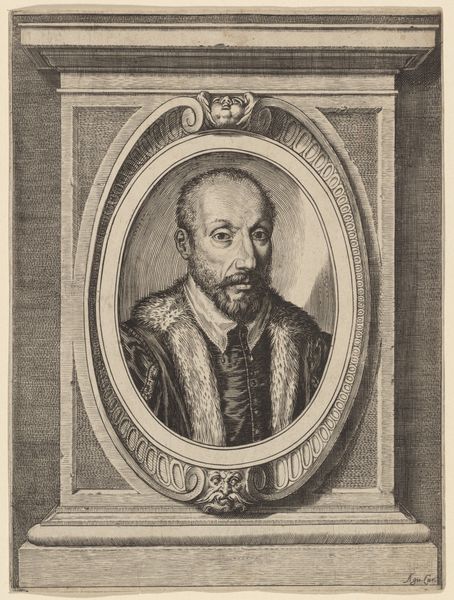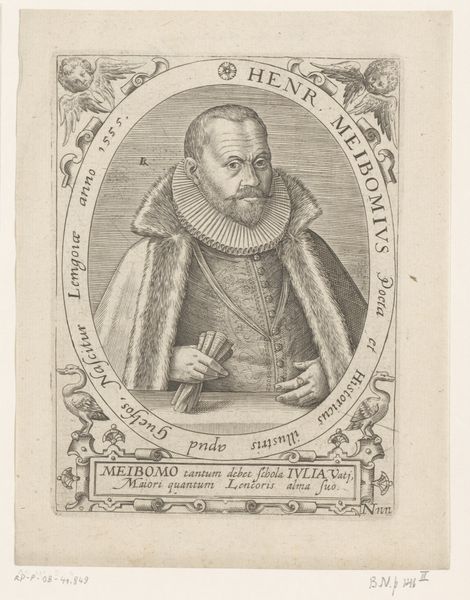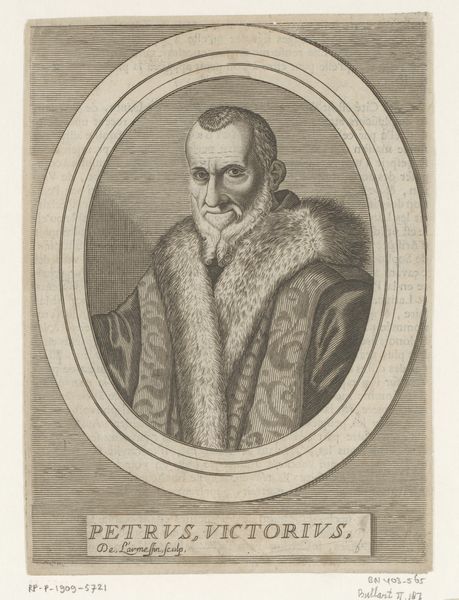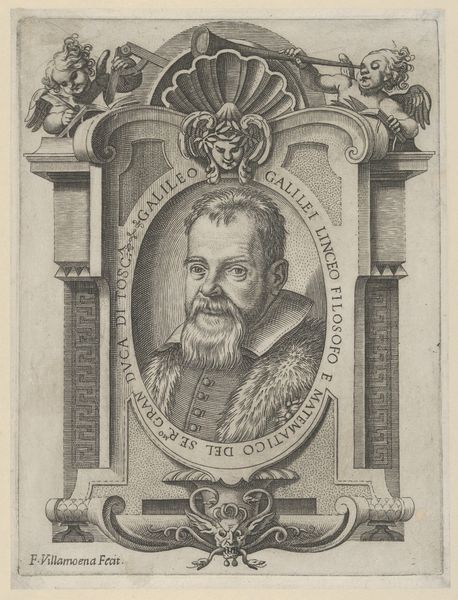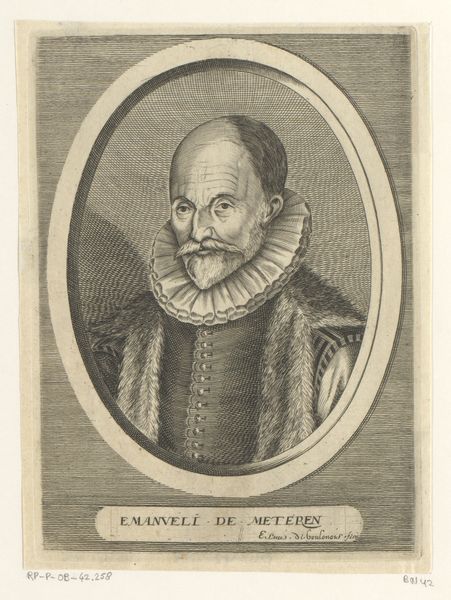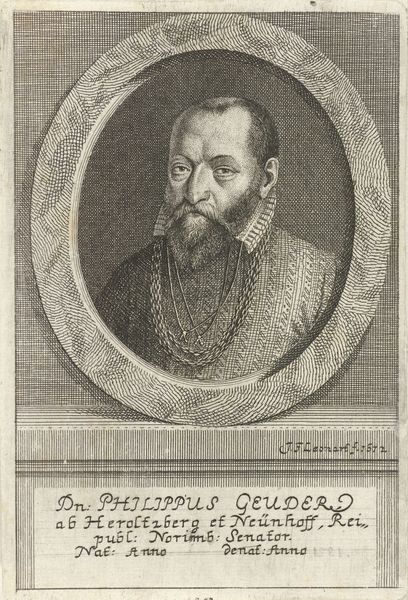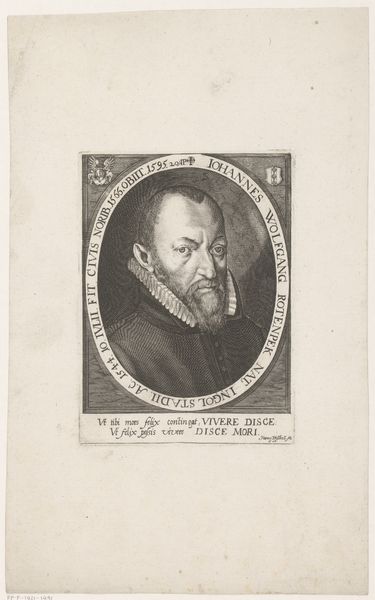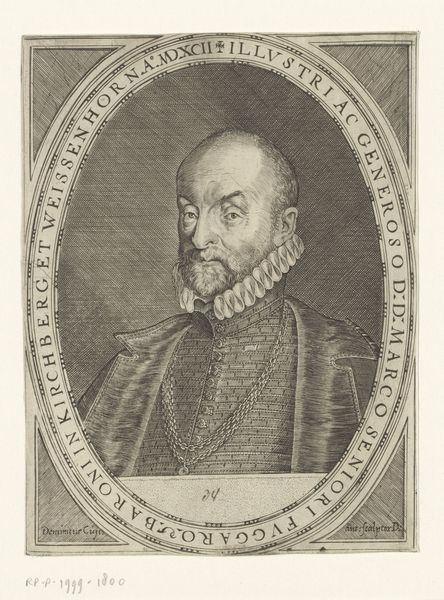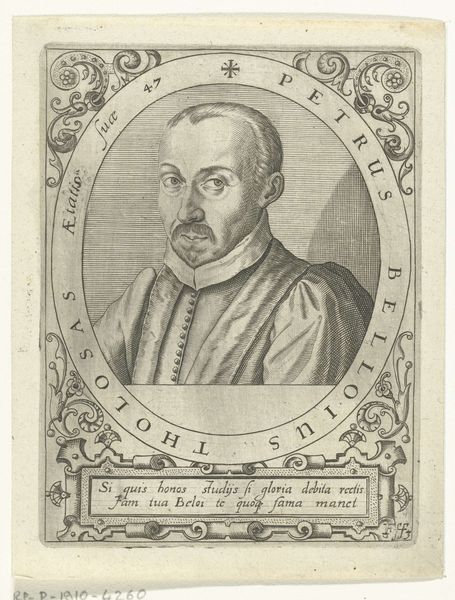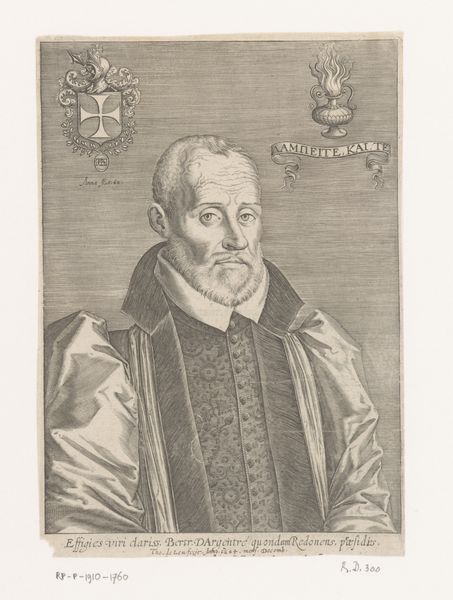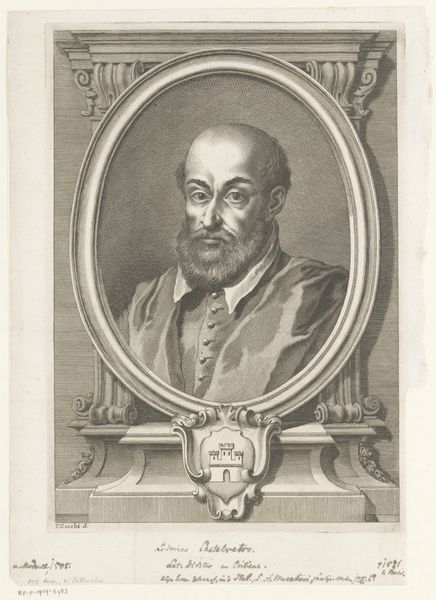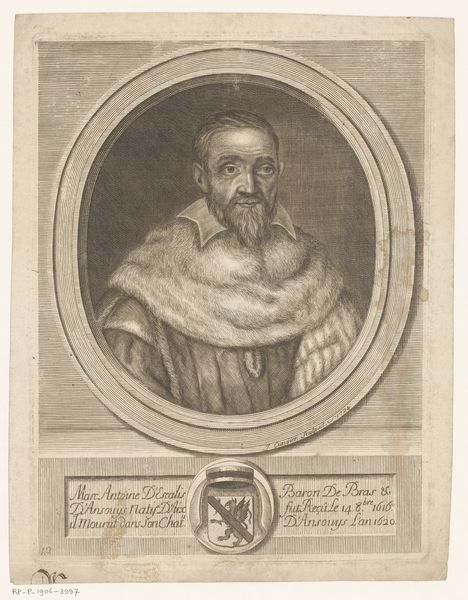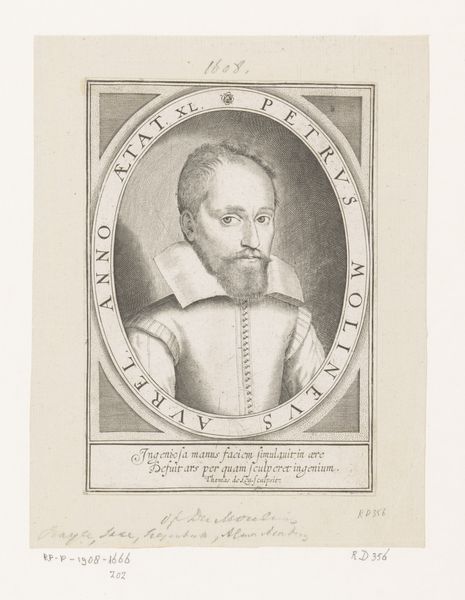
graphic-art, paper, engraving
#
portrait
#
graphic-art
#
baroque
#
old engraving style
#
paper
#
portrait drawing
#
engraving
Dimensions: height 188 mm, width 138 mm
Copyright: Rijks Museum: Open Domain
Curator: Let's consider this portrait of Guy Du Faur, Seigneur de Pibrac, an engraving crafted in 1682 by Nicolas de Larmessin, currently held at the Rijksmuseum. It presents a man encased in an oval frame. Editor: My first impression is one of contained power. He appears self-assured but with an undeniable somberness. The close frame really emphasizes his confinement. Curator: The engraving, true to Baroque portraiture, employs carefully delineated lines and textural contrasts. Notice how Larmessin captures the subject’s gaze and formal attire. Editor: Absolutely. But that very attire—the robe and folded hands—speak volumes about the role of nobility in solidifying power in the age of absolutism. What responsibilities, or repressions, are written into his pose? Curator: The composition reflects that hierarchical order. Observe how the engraver uses contrasting textures to elevate the status of the subject through visual means. The text adds to this. Editor: Yes, “Guido Favrvs.” Identity proclaimed right on the piece. Pibrac was, after all, a man deeply enmeshed in the tumultuous politics surrounding the French Wars of Religion. Does this portrait hint at the ethical tightrope he had to walk as a royal official? Curator: It is more interested in idealized representation than social commentary. But that tension certainly makes its presence felt through careful compositional calculation. Note, too, how much weight is visually afforded to the clothing, as a sign of societal rank. Editor: Still, this engraving can prompt a discussion on how people, even in official portrayals, always carry a subtle trace of their real lives, challenges, and political affiliations. How did these constraints alter and perhaps undermine the power structure? Curator: An insightful connection. The rigid style actually does open room for discussing lived human experiences in their temporal setting. Editor: It’s the very confinement, then, that unlocks broader perspectives for the modern observer. Thank you.
Comments
No comments
Be the first to comment and join the conversation on the ultimate creative platform.
